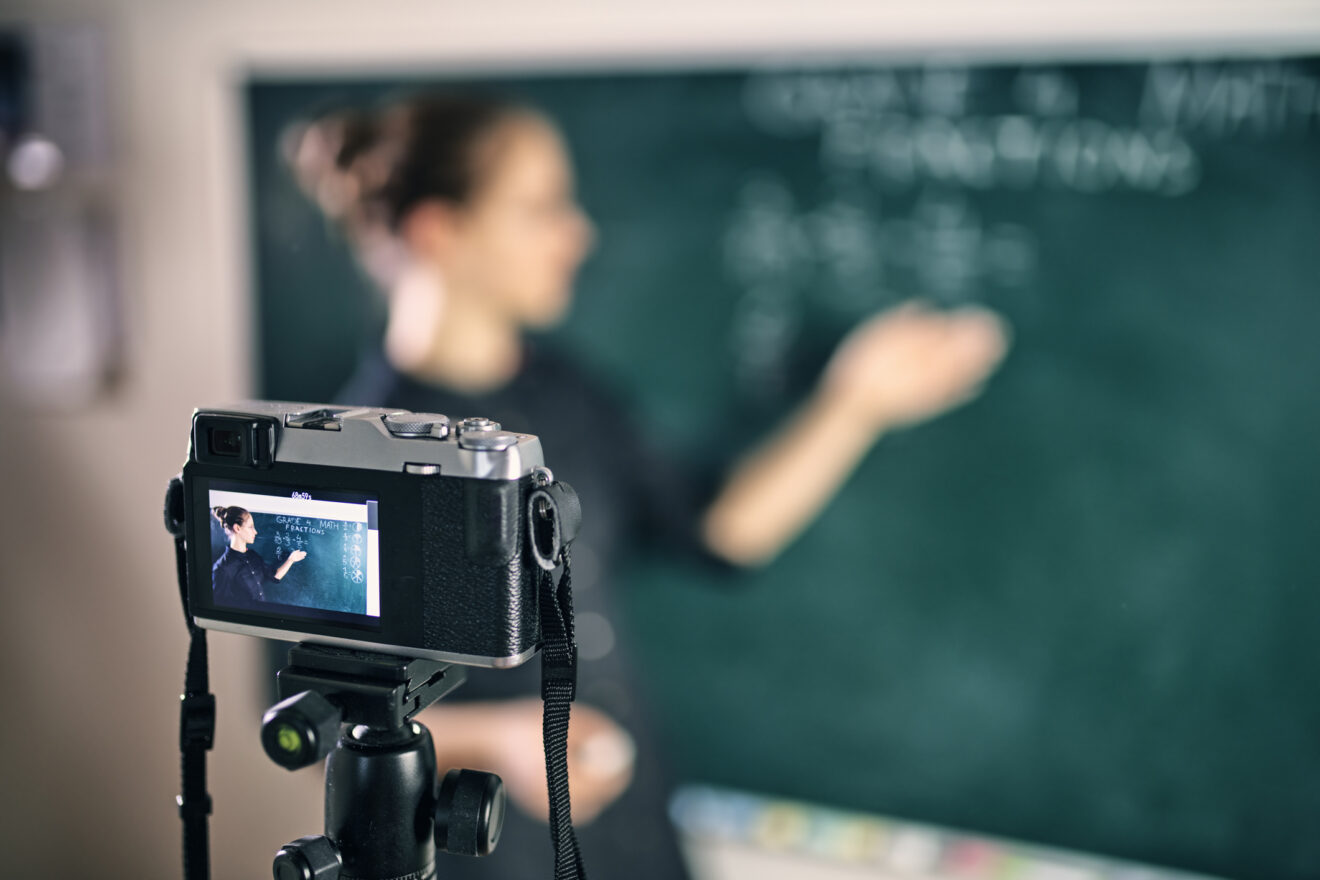When we consider using video in the educational setting, we often consider how new and experienced teachers can use it to improve their instruction and students’ learning. Teachers might use video with their coaches through coaching cycles, microteaching through peer reaction video feedback, and microcredentials. However, coaches often overlook the use of video to improve their instructional coaching practice and skills for self-reflection and professional development.

While almost no one likes how they look or sound on video, it is one of the most powerful things you can do to improve your coaching, especially if you don’t view it as just a simple critique of your performance but a tool for growth.
Why do so few coaches actually do it?
When you talk to coaches, sometimes there is limited use of video by coaches for several reasons. First, because instructional coaches often have a demanding schedule, some don’t have time for additional tasks like recording and reviewing videos. Others may lack the technical expertise to use video tools, so coaches must have access to user-friendly technology or a user-friendly video platform. Finally, some coaches are hesitant to record sessions due to concerns about privacy and confidentiality, so it is essential to address these concerns through clear guidelines and protocols. Overcoming challenges associated with video can lead to more effective instructional coaching, ultimately benefiting both teachers and students.
Why should instructional coaches use video for themselves?
Video provides a concrete picture of reality and a record of coaching, allowing coaches to pause, replay, review and reflect on their interactions. This reflective practice enables coaches to identify strengths, weaknesses and areas for improvement in their coaching conversations, instruction and created resources.
Video also allows for real-time feedback rather than playing the memory game of trying to remember what transpired without video for reflection. This allows coaches to make adjustments based on video evidence to refine their coaching techniques. Video provides an objective and unbiased view of coaching interactions where coaches can more accurately assess their communication style, body language and instructional strategies, improving their understanding of their impact on their learners.
Finally, video is a powerful tool for professional development and collaborative learning. Coaches can track skills and growth through a coaching portfolio by capturing instructional coaching moments. In addition, sharing and discussing videos with peers or within a coaching community fosters collaborative learning where coaches can learn from each others’ experiences, strategies, and challenges.
3 ways coaches can improve through video for reflection
Video allows coaches to see their coaching in action and enhance their practices through reflective discourse. It enables them to pause, replay and revisit their coaching conversations, instruction, events and outcomes to examine and reflect on coaching practice and growth.
- Self-reflection videos. Coaches can record themselves during coaching sessions or when delivering feedback to allow them to review their own interactions, body language and communication styles. Coaches can observe the video, looking for strengths and areas of improvement in questioning, active listening and rapport skills.
- Video peer coaching. Coaches exchange videos of their coaching sessions or facilitation of professional learning for specific, actionable peer feedback to each other. This practice provides constructive feedback from a colleague’s perspective, fostering a culture of continuous improvement and sharing of peer expertise.
- Video journaling for professional development. Maintain a video journal to document coaching experiences, reflections, and goals, offering a personalized and continuous record of professional growth. Coaches can regularly record short reflections on coaching sessions, insights gained, areas for improvement, and new goals based on reflections.
3 ways coaches can improve through video as models
Models are powerful in coaching and teaching. Providing videos rather than a one-time demonstration allows the coach and teacher to pause, replay and reflect on specific moments in the model. They can also break down practices through focused analysis greater than a one-time, live model alone.
- Microteaching videos for skill development. Create short videos demonstrating specific coaching skills by focusing on a single skill (e.g., paraphrasing, questioning, etc.) in each video. Watch and analyze your performance, seeking ways to refine and improve. This practice helps coaches to break down and practice individual coaching skills.
- Video showcasing best practices. Compile a library of exemplary coaching moments captured on video. Coaches can share these videos with peer coaches and use them during professional learning community meetings to provide a valuable resource for ongoing learning.
- Interactive video simulations. Develop interactive scenarios for experiential learning for coaches to navigate that mimic real coaching situations. Integrate decision points where coaches can choose how to respond with opportunities for reflection and improvement to practice skills and receive feedback.
4 ways coaches can improve through video analysis
Video analysis in instructional coaching involves recording coaching sessions, lessons, or interactions and then carefully examining the footage to gain insights into teaching practices, communication strategies and the overall effectiveness of instructional coaching. This process allows coaches to identify strengths, areas for improvement and patterns in their own and teachers’ behaviors.
- Case study videos for small-group analysis. Share anonymized video clips of coaching sessions for group analysis to encourage collaborative learning and diverse perspectives. Present these videos to a small group of coaches and discuss effective strategies, potential improvements and alternative approaches.
- Interactive video quizzing. Integrate quizzes or reflective questions into coaching videos to promote active engagement and ensure understanding of key coaching concepts.
- Live virtual observation and feedback. Use live video streaming for remote access to observe coaching sessions remotely to overcome geographical constraints and allow real-time feedback. Coaches can provide immediate feedback and engage in reflective discussions.
- Virtual coaching communities. Create a collaborative online platform, forum or dedicated online space for coaches to upload, share and discuss videos. Coaches can learn from each other through feedback and discussion about different coaching skills and approaches.
Leveraging video in these ways allows coaches to:
- Continuously refine their skills.
- Gain insights from various perspectives through ongoing learning and professional development.
- Create a reflective and skilled coaching community.
- Stay adaptable in their coaching practices.
By regularly incorporating video into their practice, instructional coaches can create a culture of continuous improvement, enhance their effectiveness and ultimately contribute to the growth and development of the teachers they support.
Donna Spangler, a 35-year education veteran, is the former K-12 instructional coach department chair for Derry Township School District in Hershey, Penn., from which she recently retired. Spanger served on the board of the Learning Forward PA, ran a school induction and mentoring program, has co-authored a book and is an instructional designer for Edjacent and a virtual coach for Sibme.
Opinions expressed by SmartBrief contributors are their own.
_________________________
Subscribe to SmartBrief’s FREE email ASCD newsletter to see the latest hot topics in education. It’s among SmartBrief’s more than 250 industry-focused newsletters.
